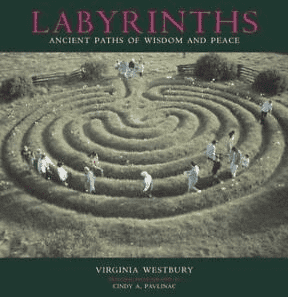The Idea of the Labyrinth from Classical Antiquity through the Middle Ages (2019) - 541 pages. AMZN. by Penelope Reed Doob
The Idea of the Labyrinth from Classical Antiquity through the Middle Ages
This book is a comprehensive study of the labyrinth symbol in Western culture. Doob traces the history of the labyrinth from its origins in the ancient world to its development in the Middle Ages. She discusses the different types of labyrinths, their symbolism, and their use in literature, art, and architecture.
What is covered in this book:
The book is divided into three parts. The first part, "The Classical Labyrinth," discusses the labyrinth in ancient Greece and Rome. Doob examines the myth of Theseus and the Minotaur, as well as the labyrinths that were depicted on coins, mosaics, and other artifacts. She also discusses the philosophical and religious significance of the labyrinth in ancient thought.
The second part, "The Medieval Labyrinth," discusses the labyrinth in the Middle Ages. Doob examines the labyrinths that were depicted in manuscripts, stained glass windows, and other works of art. She also discusses the use of the labyrinth in medieval pilgrimages and religious rituals.
The third part, "The Idea of the Labyrinth," explores the symbolism of the labyrinth in Western culture. Doob discusses the labyrinth as a symbol of the journey of life, the search for knowledge, and the soul's journey to the divine. She also discusses the labyrinth as a metaphor for the creative process and the process of self-discovery.
Overall this is a good book that reviews labyrinths in Western culture.



